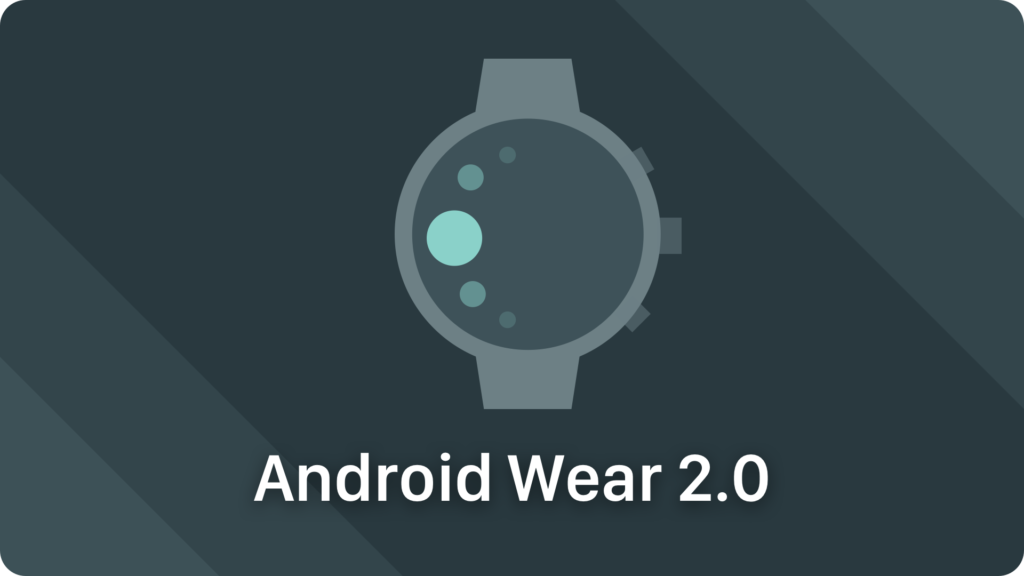If you thought that the smartwatch market has become a bit boring last few months – you were probably right. No spectacular features for wearables, no interesting devices were released. However, Google hasn’t said it’s last word in this matter. Introduction of Android Wear 2.0 is a signal that smartwatches may surprise all of us in a positive way. So what’s new in the second generation of the Google’s OS for wearables and how you can use fresh features to design great apps?
What’s new
The biggest improvement since the last major release of Android Wear is the ability to run fully native apps without need of connection with a smartphone. Finally, you are able to leave your phone and go for a walk using all of the features in your watch. Well, at least if your wearable will be connected to WiFi or supports LTE connectivity.
The next noticeable thing is improved UX with Material Design philosophy aligned for tiny screens. The first editions of Android Wear were not so intuitive. Recently introduced changes make it really easy to use.
Watch faces, a popular feature of Android watches has been also updated. Now, you are able to add tiny functional widgets to them – they are called “Complications”. You have probably heard about similar feature in wearables earlier, because naming convention is surely borrowed from Apple watchOS.
There is also a possibility to install apps from Google Play Store launched directly from a watch. Notifications and Messaging were also changed. You are able to make contactless payments with Android Pay and of course talk with Google Assistant. Google knows that one of the major user groups are fitness enthusiasts, so Google Fit app was also revised.
How this changes impact on solutions that you may design? Let’s analyze changes in context of User Experience.
Improve UX of your app for Android Wear 2.0
UI Design
The major opportunity for designer and developers is surely an introduction of updated Material Design principles for wearables. If you consider creating or updating your app, start with reading the Official Documentation here. You will find there tons of good advices and resources helping you prepare own solution.
New UI of Android Wear is much more intuitive. No more app navigation based on multiple left, right, up, down gestures combinations. They were difficult to discover by users. Now apps should include mainly vertical layouts.
A little exception to this rule is the new Navigation Drawer, the menu which presents features of your solution. It may be in a form of a pager or a grid view.
There are of course more fresh UI patterns like Action drawer, Confirmation overlay, Primary action button or Inline action buttons. Well described in official docs, will let you design your app in a much better way.
Complications
Tiny widgets available directly from the watch face are extremely useful for users that need super quick access to basic data. This may be a current weather, a simple fitness data or the last call. Single tap on a complication opens the app associated with the widget.
Create the complication for your app if you are able to present glanceable and useful data for your users. Ensure that data is easy to read. Complications should also match the style of the watch face for the best possible experience.
Notifications
UI style of notifications introduced with Android Wear 2.0 is much more readable. No more distracting photos, now the message content is the most important thing. The exception is the avatar of person who wrote you a message. If the notification is able to perform an action, you will find a small indicator of this possibility on the screen. These are major elements of collapsed notification.
Expanded notifications introduce much more features. Except the standard message title, text content and primary action you can display pictures, inline actions, smart replies and off course action drawer. Learn how to use this elements to make your app’s notifications truly interactive.
Is it perfect OS for wearables?
Many fresh features may let you think that Android Wear is the perfect platform for watches. Well, it seems to be a great one, but still not ideal. There are some features that may be not so convenient to use.
First of them is surely the keyboard. While drawing letters on tiny screens may be an interesting opportunity to compose a message, the full keyboard seems to be a mistake even it is supported by swiping gesture to type a word.
Next, Google Play Store on the watch is a nice alternative to install an app directly on the watch. However, browsing a list of solutions is an extremely tedious process.
Last thing that may be not so good is the possibility to configure additional hardware buttons. It seems to be a nice alternative of touch screen actions, but what if a particular device will not include one?
Summing up
Android Wear 2.0 is the most inspiring thing in the wearable market this year. If you create apps for Android and you did not have an opportunity to develop one for the watches, it is time to do it. If you are a designer looking for fresh possibilities in a tech industry, new UI of Google’s wearable OS is surely one of them. It looks like 2017 will be the renaissance of the smartwatches.
